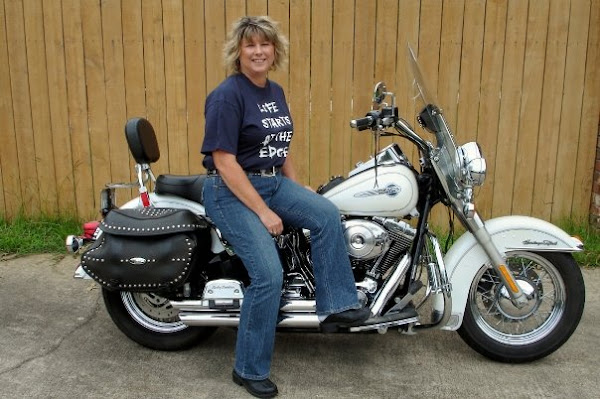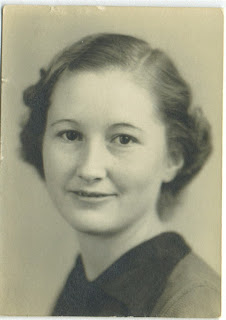
Marie & S.D. and Omega (my mother as a baby)

Inez Cooper sister of my grandmother
Marie Cooper Huffman 1937
My Grandmother
Collecting paper items is something that I have always been drawn to. Several years ago, when my great aunt passed away, I formed an appreciation of old Valentines. My Great-Aunt Willie Farley had been a school teacher in the ‘10s, ‘20s and ‘30s in Hico, Louisiana. She kept all of her valentines that she received from children over the years in a shoe box. When she passed away, my mother and aunt cleaned out her home, and this box of valentines was discovered, along with every car manual from every car they ever owned. They never had children and had spent their later years in their home in Shreveport, while still owning their home in Hico. It was like stepping back into the 1950s. They didn’t throw much away. With me being the antique lover that I am, I loved of digging into old trunks and looking through old dresser drawers and closets.
My great-aunt loved genealogy and in her later years went overseas to research our family.
My great-aunt loved genealogy and in her later years went overseas to research our family.
Many volumes of paper were left to be gone through to unravel our family’s roots, but now let me get back to the Valentines. The one I found that was the most cherished was a homemade Valentine from a young girl named Inez Cooper. Inez Cooper would later become related to Willie Farley by marriage. Willie Farley was the sister of my granddaddy S.D. Huffman of Dubach, Louisiana. He married Inez’s sister Marie. Marie was my mother’s mother.
Now that you have that little bit of my family history, I will go on with my story.
It was so interesting to look through all those cards that for so many years were safe kept as cherished possessions. The names on the backs of the cards were from children, many who still resided in Lincoln parish. My mother and aunt knew many of the names from so long ago. The art work was varied from very good to not so artistic. The fancy paper ones were funny and beautiful with the paper honeycombs still working on most. The 1920s and ‘30s artwork was so different from today’s valentines. It was a different era of time and values. It was the simple act of showing appreciation and love for you teacher. (I think it is a shame that some schools do not allow the swapping of valentines anymore.) I took those tiny cards and made a shadow box frame. They now grace my wall as a part of my family’s past that should not be forgotten and put away in a musty old shoebox.
History and family is a very important part of most people’s lives, and the gift of a Valentine can always brighten someone’s day. So this year for February 14th don’t forget the people who mean the most to you. A simple Valentine could one day turn into a cherished memory for someone very special. In fact, I received an antique Valentine last year f
 rom someone I met after researching for a story about Mr. Nick Gordon. Elsy Bless, a WWII survivor, sent me an antique Valentine from Holland! I had mentioned to her my love of the cards. Now I have a special memory of Elsy and the friendship we made even though I have never met her in person.
rom someone I met after researching for a story about Mr. Nick Gordon. Elsy Bless, a WWII survivor, sent me an antique Valentine from Holland! I had mentioned to her my love of the cards. Now I have a special memory of Elsy and the friendship we made even though I have never met her in person.The following Valentine information is taken from the President and Vice President of the National Valentine Collector’s Association (NVCA) Evalene Pulati and Nancy Rosin:
The feast of Saint Valentine has been associated with romance for 1,000 years. King Henry VIII made Valentine’s Day a national holiday. Love tokens were frequently given on the feast, almost always anonymously. Until the 1800s, they were usually handmade at home. A man or woman could spend days creating fancy drawings or cut work. Finished love token cards also could be made or written to order by specialists.
Commercially made cards became practical in the 1840s as the quality of both fancy paper and color printing was developed and refined. Lace paper, which had been around for decades, became widely available in Europe and imported into the U.S. Commercial valentine making began in the early 1800s in the U.S.
In the 1850s, Esther Howland, an enterprising Mt. Holyoke Women’s Seminary graduate, became wealthy as America’s first assembly-line producer of high-quality
 lacy valentines. She used imported lace paper to make folding creations that began at a dime but reportedly could cost up to $35 each, about the same cost as a horse and buggy. Today, her small cards bring around $30 and her larger ones, around $300. Look for an H in the upper left-hand corner of the back. (An H on the right corner is a different maker, 20 years later.)
lacy valentines. She used imported lace paper to make folding creations that began at a dime but reportedly could cost up to $35 each, about the same cost as a horse and buggy. Today, her small cards bring around $30 and her larger ones, around $300. Look for an H in the upper left-hand corner of the back. (An H on the right corner is a different maker, 20 years later.)Esther Howland’s earliest, largest and fanciest valentines aren’t signed and are recognized mostly by style. Her later cards were marked with a red H in the upper left-hand corner of the back. In 1881, Esther Howland sold out to Whitney, a major printer of children’s books.
Whitney’s biggest competitor, McLoughlin, also had a line of valentines. Some McLoughlin valentines have a blue H in the upper right-hand corner. The H confuses some people into believing they have found a Howland valentine. Sadly, this is not so. Blue H cards are by McLoughlin and usually sell for a more modest $10-$35.
By the 1800s, the so-called “comic” valentines appeared. Sent anonymously, they were a form of social criticism, cruelly pointing out people’s faults. Folks didn’t like getting them then, and they’re not favorites of too many of today’s collectors, usually selling for less than $20. About 100 years ago, the valentine to get was a German fold-out card with honeycomb tissue and beautiful die-cuts. U.S. valentines were similar but usually less fancy.
Like Kate Greenaway did in the 1880s, many top illustrators (including Norman Rockwell, Rose O’Neil, Grace Drayton, and Francis Brundage) drew valentines dur
 ing the '20s boom and the Great Depression of the '30s. Their work is popular today (worth $20-$50). Postcard valentines and paper novelty valentines made for kids in the '20s are collectible but sell for less than $20 today. Few collectors care about the simple valentines most of us grew up with (from the 1950s on). They’re inexpensive and available, making them a great hobby to start now.
ing the '20s boom and the Great Depression of the '30s. Their work is popular today (worth $20-$50). Postcard valentines and paper novelty valentines made for kids in the '20s are collectible but sell for less than $20 today. Few collectors care about the simple valentines most of us grew up with (from the 1950s on). They’re inexpensive and available, making them a great hobby to start now.So, the next time you go to a garage sale or a flea market, check out some of those old valentines. You will get a smile on your face just reading them. Until next time, seal it with a kiss!
Let me call you sweetheart is also one of my favorite songs, and I will include it for my Valentine wish to all of you.
Let Me Call You Sweetheart
Words by Beth Slater Whitson. Music by Leo Friedman. (1910) Recorded by Ruth Etting in 1931.

Let me call you Sweetheart.I'm in love with you. Let me hear you whisper that you love me too. Keep the lovelight glowing in your eyes so true.Let me call you Sweetheart.I'm in love with you! I am dreaming, dear, of you,Day by day.Dreaming when the skies are blue, When they're gray. When the silv'ry moonlight gleams, Still I wander on in dreams,In a land of love, it seems, Just with you.... Let me call you Sweetheart.I'm in love with you.Let me hear you whisper that you love me too. Keep the lovelight glowing in your eyes so true.Let me call you Sweetheart.I'm in love with you!







